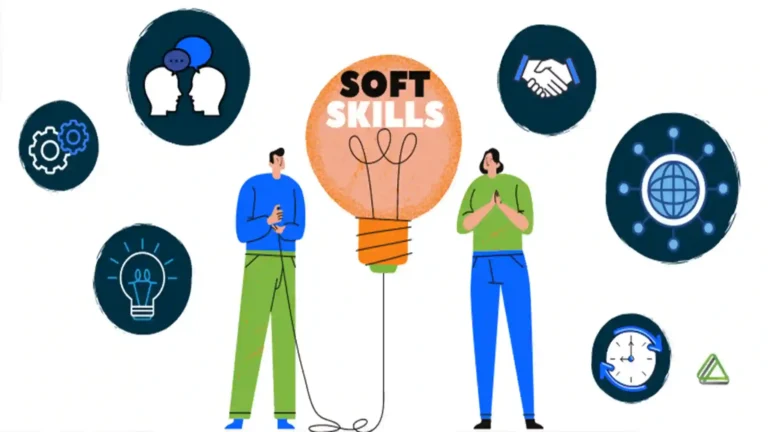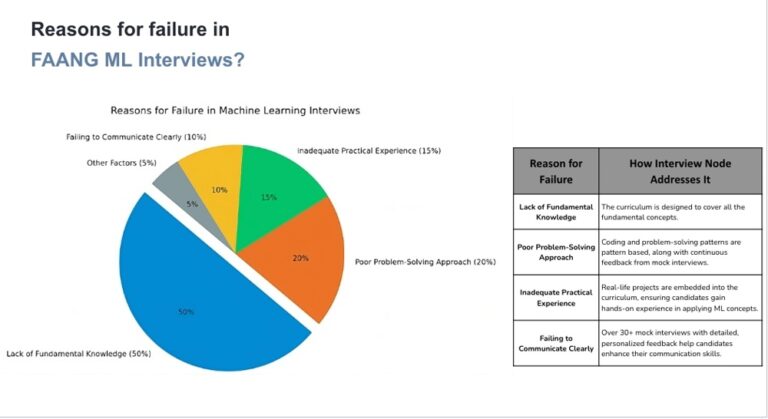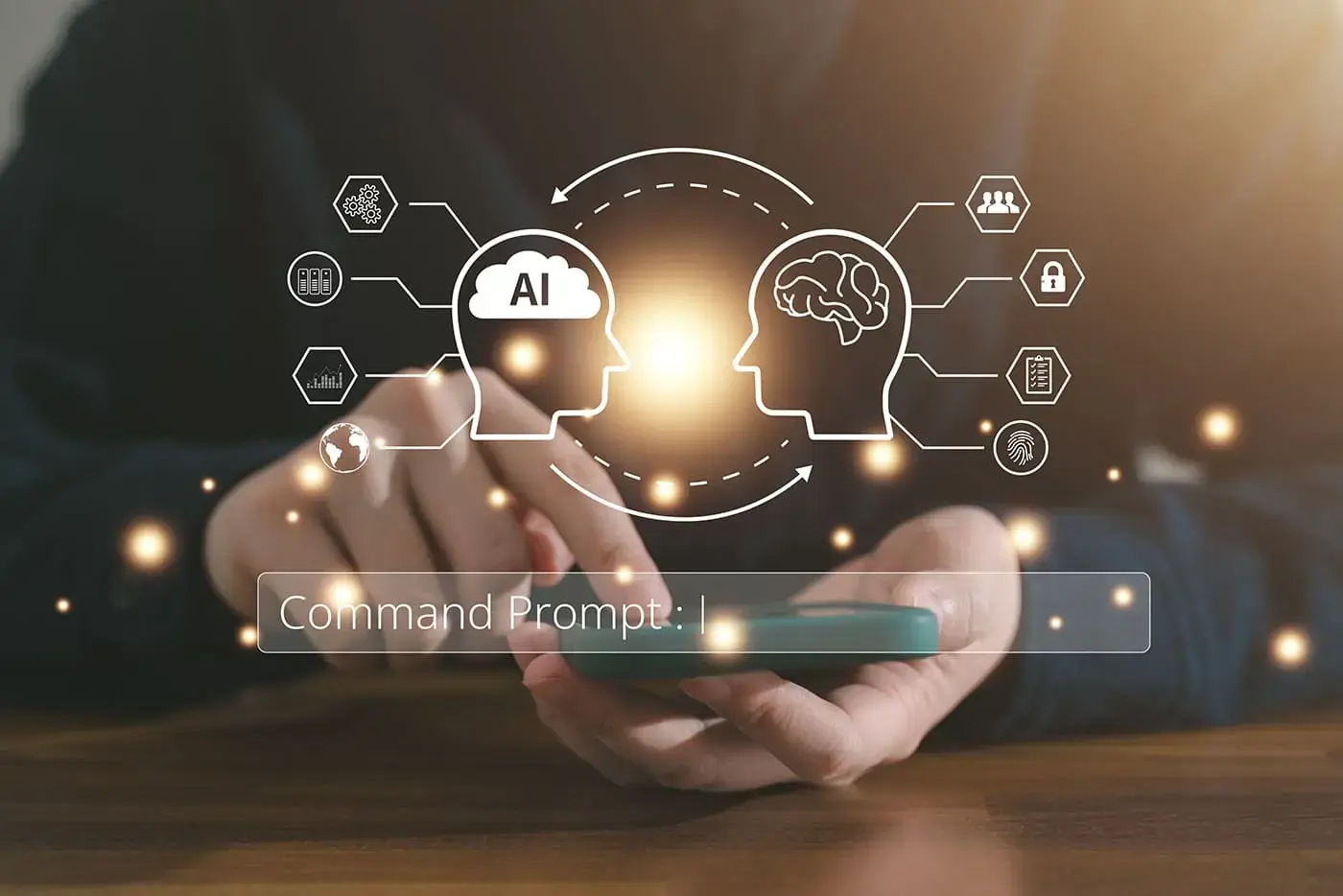Introduction: Why Portfolios Matter More Than Ever in 2025
If you’re aiming to land a machine learning engineer role in 2025, you’ll quickly find that a polished résumé and strong LeetCode skills aren’t enough. Companies — from FAANG to AI-first startups — are overwhelmed with applicants who all list the same skills: Python, TensorFlow, PyTorch, data pipelines, system design.
So how do recruiters and hiring managers separate candidates who can do ML in theory from those who can deliver ML in practice?
The answer: portfolios.
The Rise of Portfolios in ML Hiring
In the early 2010s, a résumé listing Java, Hadoop, or SQL might have been enough to land interviews. Today, the landscape is different. Employers expect to see proof of work.
Why? Because machine learning engineering is as much about building production-ready systems as it is about algorithms. Portfolios demonstrate this better than bullet points ever could.
- A résumé can say “Developed recommendation engines.”
- A portfolio can show the actual system, complete with API endpoints, dashboards, and documentation.
This shift mirrors software engineering, where GitHub contributions and personal projects became just as important as degrees. In ML, portfolios now serve as the ultimate differentiator.
What Interviewers Really Want to See
When a hiring manager scans your GitHub, Hugging Face Spaces, or personal site, they’re asking:
- Can this candidate design end-to-end ML systems, not just toy models?
- Do they understand data challenges like imbalance, drift, and noise?
- Can they handle scaling and deployment using real tools (Docker, Kubernetes, MLflow)?
- Do they demonstrate awareness of business impact, not just accuracy?
The strongest candidates prove these by showcasing projects that feel like they could be dropped into production tomorrow.
The Problem with “Toy Projects”
Too many candidates rely solely on Kaggle competitions or MNIST classifiers. While these show initiative, they’re rarely enough to impress senior recruiters.
Why?
- They don’t demonstrate real-world constraints like latency, cost, or monitoring.
- They lack end-to-end pipelines — often stopping at training, with no deployment.
- They rarely tie results to business outcomes.
In 2025, interviewers want to see more than “I trained a CNN to 99% accuracy.” They want to see projects that reflect actual job challenges.
Why 2025 Is Different
Several trends make portfolios more critical than ever:
- Explosion of AI Startups: Hundreds of AI-first companies are competing for talent, raising the bar for candidates.
- LLM Dominance: With LLMOps and fine-tuning everywhere, employers want to see hands-on experience adapting foundation models.
- MLOps Expectations: Modern ML engineers are expected to understand pipelines, deployment, and monitoring — portfolios are proof you do.
- Remote Hiring: Recruiters often evaluate candidates asynchronously, and a portfolio is your 24/7 advocate.
In short: your portfolio is now as important as your résumé.
What This Blog Will Cover
In this guide, we’ll break down the portfolio projects that will actually get you hired in 2025. We’ll explore:
- What makes a strong portfolio project vs. what interviewers dismiss as fluff.
- Five project ideas that demonstrate the skills recruiters actively scan for:
- Real-time recommendation system.
- Fraud detection with imbalanced data.
- End-to-end ML pipeline (MLOps).
- LLM fine-tuning for domain-specific tasks.
- Computer vision deployed on edge devices.
- How to present projects effectively on GitHub and in interviews.
- The future of ML portfolios — where trends like responsible AI and multimodal models are heading.
By the end, you’ll not only know which projects to build, but also how to showcase them in ways that make recruiters say: “We need to interview this candidate.”
Key Takeaway
In 2025, portfolios aren’t optional — they’re essential. A well-documented, end-to-end ML project is worth more than a dozen résumé bullet points. It’s your chance to stand out in a sea of applicants, prove your real-world readiness, and demonstrate the skills that will make you succeed as an ML engineer.
If you want to see how to frame projects for maximum hiring impact, check out InterviewNode’s guide on Building Your ML Portfolio: Showcasing Your Skills — it pairs perfectly with this guide.
What Makes a Strong ML Portfolio Project?
Not all ML portfolio projects are created equal. Some impress recruiters instantly — others get ignored after a five-second glance. To build a portfolio that gets you hired in 2025, you need to understand what makes projects stand out and what makes them forgettable.
The DNA of a Strong Portfolio Project
When hiring managers or interviewers review projects, they’re looking for evidence of real-world readiness. The best projects share these traits:
- End-to-End Implementation
- Goes beyond “I trained a model.”
- Includes data preprocessing, feature engineering, training, evaluation, deployment, monitoring.
- Mimics real ML workflows instead of stopping at Jupyter notebooks.
- Reproducibility
- Code is clean, structured, and documented.
- Requirements.txt or environment.yml files included.
- Someone else can run your project without DM’ing you on LinkedIn.
- Business Relevance
- Tied to practical impact, not just accuracy.
- Example: A fraud detection system that reduces false positives → fewer customer complaints → higher trust.
- Scalability Awareness
- Shows thought about handling real-world constraints like latency, cost, and infrastructure.
- Even if it’s a demo, mention how you’d scale it.
- Clear Documentation and Storytelling
- Strong README with problem statement, architecture diagram, results, and “how to run.”
- Bonus: a blog post or demo video explaining design decisions.
- Modern Stack
- Uses tools expected in real jobs: Docker, MLflow, Airflow, Hugging Face, Kubernetes.
- Shows that you’re not just “studying ML” but engineering ML.
What Recruiters and Hiring Managers Scan For
Let’s be honest: most recruiters spend less than two minutes looking at a GitHub repo. Hiring managers may dig deeper, but they still scan for signals:
- README clarity: Can they understand what the project does in 30 seconds?
- Commit history: Is this polished work or a half-finished class assignment?
- Deployment link: Can they try it out? (Streamlit, Gradio, Hugging Face Spaces are gold here.)
- Architecture diagrams: Helps non-technical reviewers visualize complexity.
Think of your portfolio as a marketing asset. It should sell your skills quickly and convincingly.
The Problem With Weak Portfolio Projects
Too many candidates build projects that fall into one of these traps:
❌ Toy Datasets Only
- MNIST digit classifiers, Titanic survival predictions.
- These show basic skills but are too generic to impress.
❌ Unfinished Notebooks
- Random experiments, no documentation.
- Interviewers can’t follow your thought process.
❌ No Deployment
- Projects that stop at offline accuracy and never reach API/demo stage.
- Signals “research-only” mindset, not engineering readiness.
❌ Overly Complex Without Clarity
- Implementing a cutting-edge paper but with no explanation of why it matters.
- Interviewers may think you’re chasing novelty, not impact.
How to Turn a Decent Project Into a Great One
Let’s say you’ve built a standard image classifier. How do you elevate it?
- Add data augmentation and preprocessing pipelines.
- Implement MLOps practices: version control for models, experiment tracking.
- Deploy it as a REST API with Flask or FastAPI.
- Create a demo app with Streamlit or Gradio.
- Write a blog post explaining how it could be applied in healthcare or manufacturing.
Now, instead of being “just another classifier,” it’s an end-to-end ML system with real-world framing.
Interview Perspective: How Portfolios Influence Hiring
In interviews, strong portfolios can:
- Set you apart early: Recruiters shortlist candidates who showcase impactful projects.
- Guide the conversation: Hiring managers often ask about portfolio projects, giving you control.
- Demonstrate hidden skills: A polished project shows collaboration, documentation, and business framing.
It’s not unusual for a well-presented project to be the deciding factor between two candidates with similar coding performance.
Mini-Script: How to Present a Portfolio Project in Interviews
Interviewer: “Tell me about a project you’re proud of.”
Weak Answer:
“I built a CNN for classifying images. It reached 95% accuracy.”
Strong Answer:
“I built an image classifier, but focused on real-world readiness. I created a preprocessing pipeline, tracked experiments with MLflow, and deployed it via FastAPI with a live demo on Hugging Face Spaces. Beyond accuracy, I optimized inference time, which cut latency by 40%. If applied in industry, this would reduce costs and improve user experience.”
The strong answer demonstrates engineering, impact, and scalability.
Key Takeaway
Strong ML portfolio projects aren’t about novelty or Kaggle scores — they’re about real-world readiness. The best ones are:
- End-to-end.
- Reproducible.
- Business-relevant.
- Scalable.
- Well-documented.
If you keep these principles in mind, every project you build can become a powerful hiring signal.
This foundation sets us up to explore specific portfolio projects that employers love to see — starting with real-time recommendation systems.
Portfolio Project #1 – Real-Time Recommendation System
Recommendation systems are everywhere in modern tech. Netflix suggesting what you should watch next, Amazon recommending products, YouTube personalizing video feeds — these systems directly impact billions of users and billions of dollars in revenue.
That’s why building a real-time recommendation system is one of the most valuable portfolio projects you can showcase as an aspiring ML engineer in 2025.
Why This Project Matters
Recruiters and hiring managers love this project because it demonstrates:
- Relevance: Almost every FAANG or AI-first company uses recommendation systems.
- End-to-End Skills: Involves data engineering, model training, evaluation, and deployment.
- Scalability Thinking: Requires awareness of latency, throughput, and personalization at scale.
- Business Impact: Recommendations drive engagement, retention, and revenue — exactly what executives care about.
If you can show that you’ve built even a simplified version of this, you immediately signal real-world readiness.
Technical Core of the Project
A strong recommendation project usually combines:
- Data Preprocessing
- Collect user-item interaction data (e.g., movie ratings, product purchases, clickstreams).
- Handle sparse and imbalanced interactions.
- Modeling Approaches
- Collaborative Filtering (Matrix Factorization, ALS).
- Content-Based Models (TF-IDF, embeddings).
- Deep Learning Models (Neural Collaborative Filtering, Transformers for sequences).
- Real-Time Inference
- Use approximate nearest neighbor search (ANN) libraries like FAISS or ScaNN for fast retrieval.
- Deploy via API (FastAPI, Flask) with caching for low-latency responses.
- Evaluation Metrics
- Precision@K, Recall@K, NDCG, Mean Reciprocal Rank (MRR).
- Business-aligned metrics like CTR (click-through rate).
- Deployment & Monitoring
- Serve through Docker/Kubernetes.
- Monitor CTR drift or recommendation diversity.
- Set up feedback loops for retraining.
Mini-Scenario: Presenting This Project in an Interview
Interviewer Question: “Tell me about your recommendation system project.”
Weak Answer:
“I built a collaborative filtering system that achieved high recall on the MovieLens dataset.”
Strong Answer:
“I built a real-time recommendation system using MovieLens data. I preprocessed user-item interactions and trained both collaborative filtering and neural models. To ensure scalability, I integrated FAISS for fast nearest-neighbor search and deployed it with FastAPI. I also set up monitoring to track CTR drift over time. Beyond accuracy, I emphasized latency and diversity — because in production, keeping users engaged is as important as predicting the ‘right’ item.”
This demonstrates system-level thinking + business awareness.
Elevating the Project for 2025
To stand out in 2025, go beyond static recommenders:
- Add a real-time feedback loop (users’ clicks instantly influence future recommendations).
- Implement A/B testing simulation — show how you’d measure business lift.
- Experiment with LLMs for personalization — e.g., using embeddings from BERT to improve cold-start recommendations.
These enhancements show you’re not just replicating Kaggle code — you’re thinking like an ML engineer at scale.
Common Pitfalls to Avoid
❌ Stopping at training — If your project ends in a notebook, it signals research-only focus.
❌ Overfitting benchmarks — Accuracy isn’t the only metric; latency and diversity matter.
❌ No deployment — Without an API or demo, recruiters can’t visualize real-world use.
How to Present This in Your Portfolio
- GitHub Repo Structure:
- data/ → preprocessing scripts.
- models/ → training pipelines.
- deployment/ → Docker + FastAPI.
- monitoring/ → drift detection, metrics logging.
- README Essentials:
- Problem statement (e.g., “personalized movie recommendations”).
- Architecture diagram.
- Instructions for running locally.
- Screenshots/demo link.
- Live Demo Options:
- Streamlit or Gradio for UI.
- Hugging Face Spaces for hosting.
Key Takeaway
A real-time recommendation system project proves you can handle one of the most business-critical ML problems in tech. It shows:
- End-to-end ML engineering skills.
- Scalability awareness.
- Business alignment.
- Deployment readiness.
In interviews, this project gives you a chance to talk about trade-offs, data challenges, and impact — exactly what hiring managers want to hear.
Portfolio Project #2 – Fraud Detection with Imbalanced Data
Fraud detection is one of the most practical and in-demand ML applications in industry. From credit card companies to fintech startups to e-commerce platforms, detecting fraudulent transactions is a mission-critical task. That’s why a fraud detection project makes a standout addition to your portfolio — it demonstrates not just ML knowledge, but the ability to handle imbalanced data and high-stakes decisions.
Why This Project Matters
Recruiters and hiring managers love to see fraud detection projects because they highlight:
- Real-world complexity: Fraudulent cases are rare (often <1% of data). Handling imbalance is a critical skill.
- Business impact: Each false negative (missed fraud) costs money. Each false positive (flagging good transactions) frustrates customers.
- End-to-end ML: Requires data preprocessing, modeling, monitoring, and cost-sensitive evaluation.
- Risk-aware decision making: Teaches engineers to think beyond raw accuracy.
This project shows you can design systems that balance accuracy with user trust and financial impact.
Technical Core of the Project
A strong fraud detection project should cover:
- Data Preparation
- Work with imbalanced datasets (e.g., Kaggle Credit Card Fraud dataset).
- Address missing values, anonymized features, and skewed distributions.
- Handling Class Imbalance
- Oversampling (SMOTE), undersampling, or hybrid methods.
- Cost-sensitive learning: weighting fraud cases higher in the loss function.
- Anomaly detection techniques for rare cases.
- Modeling Approaches
- Gradient boosting (XGBoost, LightGBM, CatBoost).
- Random forests and logistic regression as baselines.
- Deep learning (autoencoders, transformers) for advanced exploration.
- Evaluation Metrics
- Avoid plain accuracy — use precision, recall, F1-score, ROC-AUC.
- Calibrate thresholds depending on business needs (minimize false negatives vs. false positives).
- Deployment & Monitoring
- Serve as an API that flags transactions in real time.
- Add drift detection since fraud patterns evolve.
- Monitor false positive/negative ratios in production.
Mini-Scenario: Presenting This Project in an Interview
Interviewer Question: “Tell me about your fraud detection project.”
Weak Answer:
“I trained a model on the credit card dataset. It had 99% accuracy.”
Strong Answer:
“I built a fraud detection model using an imbalanced credit card dataset. Since fraud cases were less than 1%, I applied SMOTE and class-weighting to handle imbalance. I evaluated performance using precision and recall instead of accuracy, since false positives and negatives carry very different costs. To make it production-ready, I deployed the model via FastAPI and implemented drift monitoring to adapt to changing fraud patterns. This project taught me how to balance technical performance with customer trust and business impact.”
This shows data awareness + business alignment.
Elevating the Project for 2025
To make your fraud detection project stand out even more:
- Simulate real-time data streams (Kafka, Spark Streaming).
- Build dashboards (Streamlit, Grafana) for fraud monitoring.
- Implement explainability tools (SHAP, LIME) to explain fraud flags — critical for compliance.
- Add a feedback loop so flagged transactions can be reviewed and fed back into training.
This shows you’re not just building a model, but designing a practical fraud detection system.
Common Pitfalls to Avoid
❌ Reporting only accuracy: With extreme imbalance, 99% accuracy may mean you flagged zero fraud.
❌ Ignoring cost trade-offs: Missing fraud (false negative) is more expensive than a false alarm.
❌ Stopping at training: If your model never gets deployed or monitored, it doesn’t feel production-ready.
How to Present This in Your Portfolio
- GitHub Repo Structure:
- data/ → preprocessing scripts.
- models/ → class imbalance handling + training.
- deployment/ → FastAPI, Docker.
- monitoring/ → drift detection + logging.
- README Essentials:
- Problem framing: “fraud detection with imbalanced data.”
- Explanation of cost-sensitive evaluation.
- Clear run instructions.
- Demo screenshots (optional: Streamlit fraud dashboard).
- Live Demo Options:
- Use synthetic transaction streams to show real-time fraud alerts.
Key Takeaway
A fraud detection project demonstrates that you can handle:
- Imbalanced, high-stakes data.
- Business trade-offs between precision and recall.
- Deployment and monitoring for evolving patterns.
In interviews, this project gives you an ideal chance to talk about decision-making under constraints — one of the most important hidden skills ML engineers need in real-world roles.
Portfolio Project #3 – End-to-End ML Pipeline (MLOps)
If there’s one project that screams real-world readiness, it’s an end-to-end ML pipeline. In research, models live in Jupyter notebooks. In industry, they live in pipelines — automated workflows that handle data ingestion, preprocessing, training, deployment, and monitoring.
That’s why recruiters and hiring managers love to see portfolio projects built with MLOps practices. They know you’re not just an algorithm person — you’re an engineer who can ship ML systems that survive in production.
Why This Project Matters
An end-to-end pipeline project checks every hiring box:
- Completeness: Shows you can manage the full ML lifecycle.
- Scalability: Demonstrates skills in automation and distributed systems.
- Reliability: Includes monitoring, retraining, and rollback strategies.
- Modern Stack: Uses tools that top companies rely on daily (Airflow, MLflow, Kubernetes).
In 2025, every serious ML engineer is expected to understand MLOps basics. Having this project in your portfolio puts you ahead of candidates who stop at training notebooks.
Technical Core of the Project
A strong end-to-end ML pipeline project usually includes:
- Data Ingestion
- Pull data from APIs, databases, or real-time streams.
- Use tools like Apache Kafka or AWS Kinesis for streaming pipelines.
- Preprocessing & Feature Engineering
- Automated cleaning, transformations, and feature extraction.
- Orchestrated with Apache Airflow or Prefect.
- Model Training & Experiment Tracking
- Use MLflow or Weights & Biases for versioning and experiment logging.
- Implement hyperparameter tuning (Optuna, Ray Tune).
- Deployment
- Containerize with Docker.
- Deploy via Kubernetes or serverless frameworks (AWS SageMaker, GCP Vertex AI).
- Monitoring & Retraining
- Monitor performance drift and data quality.
- Trigger retraining when thresholds are exceeded.
- Log metrics with Prometheus/Grafana.
Mini-Scenario: Presenting This Project in an Interview
Interviewer Question: “Tell me about a project where you automated ML workflows.”
Weak Answer:
“I trained a model and saved it with pickle. Later, I used it in production.”
Strong Answer:
“I built an end-to-end ML pipeline for predicting customer churn. Data was ingested from a PostgreSQL database, cleaned via Airflow DAGs, and features were engineered automatically. I tracked experiments with MLflow, containerized the model using Docker, and deployed it to Kubernetes. I also implemented drift detection — when churn prediction accuracy dropped below 85%, the pipeline triggered retraining. This project demonstrated not just model training, but continuous delivery of ML.”
This answer proves production engineering maturity.
Elevating the Project for 2025
To stand out, make your MLOps project:
- Cloud-native: Deploy on AWS/GCP/Azure and explain infra choices.
- Multi-model: Support A/B testing or champion–challenger deployment.
- Explainable: Integrate SHAP or LIME for model transparency.
- CI/CD-enabled: Use GitHub Actions or Jenkins for automated testing and deployment.
These enhancements show you’re thinking like an ML engineer working at scale.
Common Pitfalls to Avoid
❌ Toy-only pipelines: If your pipeline only processes MNIST digits, it won’t impress recruiters. Use data with real-world messiness.
❌ Skipping monitoring: Pipelines without drift detection feel incomplete.
❌ Over-engineering without clarity: Adding 10 tools but no clear documentation confuses interviewers.
How to Present This in Your Portfolio
- GitHub Repo Structure:
- dags/ → Airflow pipelines.
- models/ → training code + MLflow tracking.
- deployment/ → Docker + Kubernetes manifests.
- monitoring/ → drift detection + Grafana dashboards.
- README Essentials:
- High-level architecture diagram.
- Step-by-step “how to run locally / in cloud.”
- Clear explanation of monitoring + retraining strategy.
- Live Demo Options:
- Include screenshots of Airflow DAGs.
- Host a small-scale deployment on Heroku or Hugging Face Spaces (for demo).
Key Takeaway
An end-to-end ML pipeline project proves you can do what matters most in ML engineering: make machine learning production-ready. It shows:
- End-to-end lifecycle ownership.
- Familiarity with modern MLOps stacks.
- Attention to reliability and monitoring.
- Ability to connect data, models, and business outcomes seamlessly.
When recruiters see this project, they know you’re not just an ML enthusiast — you’re someone who can own ML in production.
Portfolio Project #4 – Large Language Model (LLM) Fine-Tuning
In 2025, large language models (LLMs) dominate the AI landscape. From chatbots and copilots to document summarizers and search engines, nearly every major company is building products powered by LLMs. That’s why LLM fine-tuning projects are among the most impressive additions to a modern ML portfolio.
This type of project proves you’re not only comfortable working with cutting-edge models, but also skilled in adapting them to specific domains — a highly sought-after ability in today’s job market.
Why This Project Matters
Hiring managers value LLM projects because they demonstrate:
- Relevance: LLMs are everywhere — in finance, healthcare, e-commerce, and SaaS tools.
- Practical ML skills: Shows you can move beyond using pretrained models and actually adapt them to solve domain-specific problems.
- Awareness of trade-offs: Fine-tuning requires balancing compute costs, latency, and accuracy.
- Innovation potential: Signals that you can contribute to products at the forefront of AI.
For candidates, this project is a chance to stand out in a crowded market by showing hands-on experience with technologies that companies are betting their future on.
Technical Core of the Project
A strong LLM fine-tuning project often involves:
- Choosing a Base Model
- Open-source models like LLaMA 2, Falcon, Mistral, or Hugging Face’s BLOOM.
- Balance between performance and resource requirements.
- Data Preparation
- Collect or curate domain-specific datasets (finance reports, legal documents, customer support logs).
- Clean and tokenize text.
- Ensure compliance and data privacy considerations.
- Fine-Tuning Strategies
- Full fine-tuning: Adjust all parameters (resource-heavy).
- Parameter-efficient fine-tuning (PEFT): Use LoRA, adapters, or prefix tuning to reduce cost.
- Instruction-tuning or RLHF: Align outputs with desired behaviors.
- Evaluation
- Domain-specific benchmarks (e.g., BLEU, Rouge for summarization, accuracy for Q&A).
- Human evaluation for relevance, fluency, and factual correctness.
- Deployment
- Serve via Hugging Face Inference API, FastAPI, or containerized microservices.
- Optimize for latency with quantization (bitsandbytes, ONNX Runtime).
- Add safeguards for prompt injection and hallucinations.
Mini-Scenario: Presenting This Project in an Interview
Interviewer Question: “Tell me about your LLM fine-tuning project.”
Weak Answer:
“I fine-tuned GPT on a dataset. It improved accuracy for my task.”
Strong Answer:
“I fine-tuned LLaMA 2 on a dataset of legal contracts to build a contract summarization assistant. To reduce compute costs, I used LoRA for parameter-efficient fine-tuning. I evaluated results with Rouge and human review, ensuring summaries preserved critical legal terms. For deployment, I quantized the model with bitsandbytes to improve inference speed and served it through FastAPI. I also added safeguards against hallucinations by integrating retrieval-augmented generation with a legal clause database. This project taught me how to adapt foundation models responsibly for high-stakes domains.”
This answer showcases technical mastery + business awareness + responsible AI thinking.
Elevating the Project for 2025
To really stand out in 2025, enhance your LLM project with:
- RAG (Retrieval-Augmented Generation): Combine LLMs with vector databases (Pinecone, Weaviate, FAISS) to reduce hallucinations.
- Evaluation dashboards: Build Streamlit apps to visualize model responses and metrics.
- Multi-modal extensions: Add image or tabular inputs for richer functionality.
- Responsible AI focus: Include bias testing, interpretability, and safety mechanisms.
These enhancements signal that you’re thinking ahead — not just building demos, but designing production-grade AI systems.
Common Pitfalls to Avoid
❌ Black-box usage: Simply calling an API like GPT-4 doesn’t count as a portfolio project. Show adaptation and customization.
❌ Ignoring cost trade-offs: Fine-tuning is expensive; demonstrate awareness of optimization methods.
❌ No deployment: Without a demo, recruiters can’t see how it might work in real products.
❌ Skipping explainability: LLMs are under heavy scrutiny; ignoring safety/interpretability is a red flag.
How to Present This in Your Portfolio
- GitHub Repo Structure:
- data/ → dataset curation and preprocessing.
- models/ → fine-tuning scripts (LoRA, PEFT).
- deployment/ → API + Docker setup.
- monitoring/ → logging + drift detection.
- README Essentials:
- Problem statement (e.g., “Legal document summarization assistant”).
- Explanation of fine-tuning strategy (LoRA vs. full fine-tuning).
- Results: both metrics + qualitative examples.
- Demo link (Hugging Face Spaces, Streamlit).
Key Takeaway
An LLM fine-tuning project shows you’re working at the frontier of ML engineering. It proves:
- You understand foundation models and how to adapt them.
- You can balance compute costs with performance.
- You deploy responsibly, with safeguards and monitoring.
- You’re ready to contribute to the most in-demand AI products of 2025.
In interviews, this project positions you as someone who doesn’t just “use AI” — you engineer it.
Portfolio Project #5 – Computer Vision with Edge Deployment
Computer vision powers some of the most exciting real-world applications: self-driving cars, AR/VR devices, smart cameras, and quality inspection systems in manufacturing. But while training vision models is common, deploying them on edge devices (phones, IoT hardware, robotics) is what truly sets an ML engineer apart.
That’s why a computer vision with edge deployment project is one of the strongest signals you can include in your ML portfolio for 2025. It shows that you’re not only good at building models — you know how to make them work under real-world constraints.
Why This Project Matters
Recruiters and hiring managers value this project because it demonstrates:
- Practicality: Edge ML is used in Tesla’s Autopilot, Apple’s FaceID, AR glasses, and drones.
- Resource awareness: Shows you can optimize models for limited memory, compute, and battery life.
- Deployment skills: Proves you can take ML out of the cloud and into real-world devices.
- Business impact: Edge ML reduces costs (fewer cloud calls), improves privacy, and enables real-time inference.
This is a project that immediately differentiates you from candidates who only showcase cloud-based or notebook-only ML.
Technical Core of the Project
A strong computer vision + edge deployment project usually includes:
- Data Pipeline
- Collect or use existing datasets (e.g., custom images, COCO, Open Images).
- Perform augmentations for robustness (rotations, noise, lighting changes).
- Model Development
- Train CNNs (ResNet, EfficientNet) or lightweight architectures (MobileNet, SqueezeNet).
- Apply transfer learning to speed up training on smaller datasets.
- Optimization for Edge
- Quantization: Convert weights from FP32 → INT8 for faster inference.
- Pruning: Remove redundant neurons/filters to shrink the model.
- TensorRT / ONNX Runtime: Accelerate inference on GPUs or CPUs.
- Deployment
- Deploy to Raspberry Pi, NVIDIA Jetson, or even mobile (TensorFlow Lite, Core ML).
- Package with Docker or directly compile into an app.
- Monitoring & Feedback
- Log edge-device performance (latency, FPS, memory).
- Create a lightweight UI to visualize predictions in real time.
Mini-Scenario: Presenting This Project in an Interview
Interviewer Question: “Tell me about your edge ML project.”
Weak Answer:
“I trained a ResNet and deployed it to a Raspberry Pi.”
Strong Answer:
“I built a computer vision system for real-time defect detection in a manufacturing setting. I trained a MobileNet model with transfer learning, then optimized it with INT8 quantization and pruning to reduce inference latency by 60%. I deployed it on a Raspberry Pi using TensorFlow Lite, achieving predictions at 15 FPS. I also set up monitoring to track edge-device resource usage and created a Streamlit UI for live video demos. This project taught me how to balance accuracy with edge constraints like power and latency — skills directly relevant to companies deploying CV at scale.”
This answer shows system-level optimization + awareness of business impact.
Elevating the Project for 2025
To stand out even more in 2025, you could:
- Add multi-modal input (vision + audio for robotics).
- Implement privacy-preserving inference on-device (no cloud uploads).
- Create a streaming pipeline (Kafka or MQTT) for edge-to-cloud communication.
- Integrate LLMs with vision models (e.g., captioning or visual question answering).
This makes your portfolio project not just cutting-edge but future-ready.
Common Pitfalls to Avoid
❌ Ignoring optimization: Just training a big model and dumping it on a Pi isn’t impressive.
❌ No measurement of latency/accuracy trade-offs: Recruiters want to see numbers.
❌ Skipping business framing: “I made it run on a phone” is weaker than “This approach improves privacy and reduces cloud inference costs.”
How to Present This in Your Portfolio
- GitHub Repo Structure:
- data/ → preprocessing + augmentation scripts.
- models/ → training + optimization scripts.
- deployment/ → TensorFlow Lite / ONNX + edge device setup.
- monitoring/ → latency/memory benchmarks.
- README Essentials:
- Problem statement (e.g., “real-time defect detection on edge devices”).
- Architecture diagram of model + deployment flow.
- Performance metrics: accuracy, FPS, memory usage.
- Demo screenshots or video link.
- Live Demo Options:
- Record a short video of your Raspberry Pi/Jetson model working in real time.
- Host lightweight demos using Gradio/Streamlit.
Key Takeaway
A computer vision with edge deployment project shows you can:
- Handle real-world compute constraints.
- Optimize models for latency, cost, and user privacy.
- Deploy ML in non-cloud environments — critical for robotics, AR, and IoT.
- Connect technical achievements to business value.
In interviews, this project signals you’re an engineer who doesn’t just build cool models, but knows how to make them practical, portable, and production-ready.
The Future of ML Portfolios (2025 and Beyond)
ML portfolios aren’t static checklists — they evolve with the industry. What impressed recruiters in 2020 (like Kaggle projects) may not cut it in 2025. The bar keeps rising, and candidates need to adapt.
Emerging Trends
- LLM-Centric Projects
- Fine-tuning and retrieval-augmented generation (RAG) are already baseline skills.
- Recruiters will expect to see projects showcasing responsible and cost-efficient LLM use.
- Responsible AI
- Bias detection, explainability, and compliance are no longer “nice-to-haves.”
- Portfolios that show awareness of ethical trade-offs will stand out.
- Multimodal ML
- Combining text, images, and audio in real-world apps (e.g., AR/VR, robotics).
- Companies will favor candidates who can bridge modalities.
- Continuous Portfolios
- Portfolios will become “living resumes” — regularly updated with blog posts, demos, and open-source contributions.
- Recruiters will check for growth and consistency over time.
What This Means for Candidates
By 2025, a competitive ML portfolio isn’t just about proving you can code models. It’s about proving you can:
- Adapt research into production-ready systems.
- Design responsibly with fairness and privacy in mind.
- Stay current with the latest ML trends (LLMs, multimodal, edge).
The candidates who embrace portfolios as evolving, professional showcases — not just one-off class projects — will be the ones landing offers at FAANG, startups, and everywhere in between.
Conclusion: Portfolios Are Your Ticket to 2025 Hiring Success
In today’s ML job market, portfolios are no longer optional. They’ve become the clearest signal of whether you can transition from classroom knowledge or research experiments into production-ready engineering.
A résumé can say “built recommendation systems” — but a polished portfolio can show the code, the pipeline, the deployment, and the business value.
By showcasing projects like real-time recommendation engines, fraud detection on imbalanced data, end-to-end MLOps pipelines, LLM fine-tuning, and computer vision with edge deployment, you’re proving that you’re not just a student of machine learning — you’re an engineer ready to ship impactful systems.
And how you present them matters just as much as what you build. A clean GitHub repo, a compelling README, a demo link, and framing that ties results to business outcomes can be the difference between getting ignored and getting hired.
If you’re looking for inspiration on framing your portfolio effectively, check out InterviewNode’s guide on Building Your ML Portfolio: Showcasing Your Skills. And if you’re already interviewing at big tech, pair this with ML Interview Tips for Mid-Level and Senior-Level Roles at FAANG Companies to align your portfolio with recruiter expectations.
Frequently Asked Questions (FAQs)
1. How many portfolio projects should I include?
Three to five well-documented, end-to-end projects are stronger than ten half-finished ones.
2. Should I include Kaggle projects?
Yes, but elevate them — add preprocessing pipelines, deployment, and business framing.
3. Do projects need to use cutting-edge models?
Not always. Recruiters value clarity, reproducibility, and deployment more than novelty.
4. Where should I host my portfolio?
GitHub is standard, but adding demos on Hugging Face Spaces or Streamlit makes projects more tangible.
5. Do I need cloud deployment experience?
Yes. Even a small AWS/GCP/Azure deployment signals production readiness.
6. How important is documentation?
Critical. A strong README often gets more attention than raw code.
7. Should I write blogs about my projects?
Highly recommended. Explaining your process publicly shows communication skills and builds credibility.
8. What’s the biggest mistake candidates make with portfolios?
Leaving projects unfinished or undocumented — it signals lack of follow-through.
9. How do I make my projects stand out in interviews?
Frame them using STAR (Situation, Task, Action, Result), emphasizing impact, not just accuracy.
10. Do I need LLM-related projects in 2025?
Strongly recommended. LLM fine-tuning or RAG will be baseline expectations for many roles.
11. How do I show scalability in small projects?
Discuss how you’d extend it: mention Docker, Kubernetes, or monitoring strategies. Even theoretical awareness matters.
12. Should I collaborate with others on projects?
Yes. Team-based repos show you can work like an engineer, not just a solo coder.
13. What if I don’t have industry data?
Use public datasets but frame them in real-world scenarios. Recruiters know not everyone has proprietary data.
14. How do I demonstrate responsible AI in projects?
Add fairness checks, explainability tools (e.g., SHAP), or notes on ethical trade-offs.
15. How often should I update my portfolio?
Continuously. Treat it as a “living resume.” Even small commits or blog posts show growth.
The best ML engineers of 2025 won’t just solve toy problems or replicate research papers. They’ll demonstrate the ability to bridge theory with practice, showing employers how they can build systems that are scalable, reliable, and business-aligned.
Your portfolio is your stage. Use it not just to showcase your technical ability but to tell the story of your impact. Do that well, and your projects won’t just get you noticed — they’ll get you hired.






